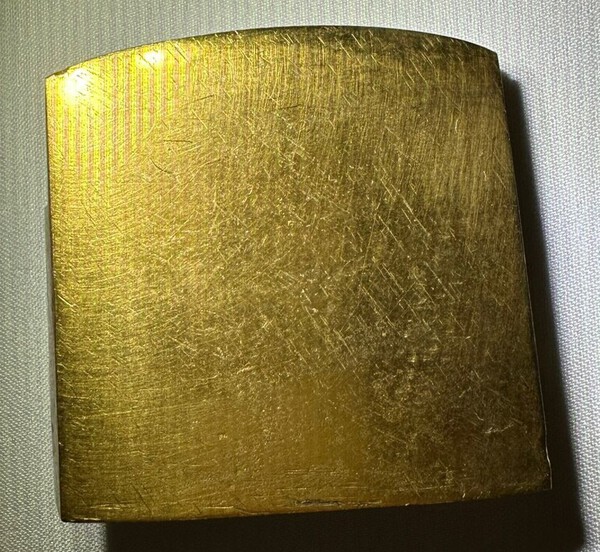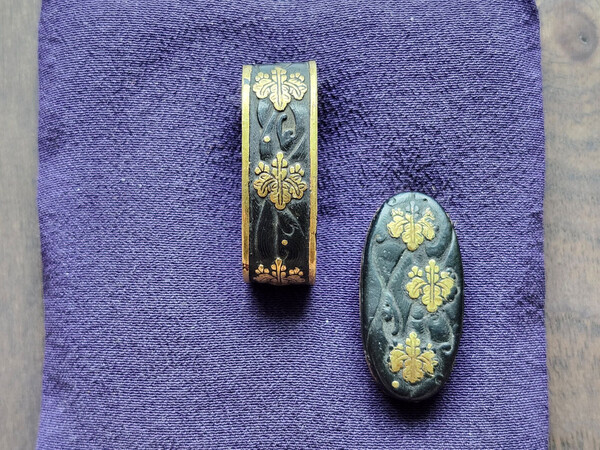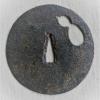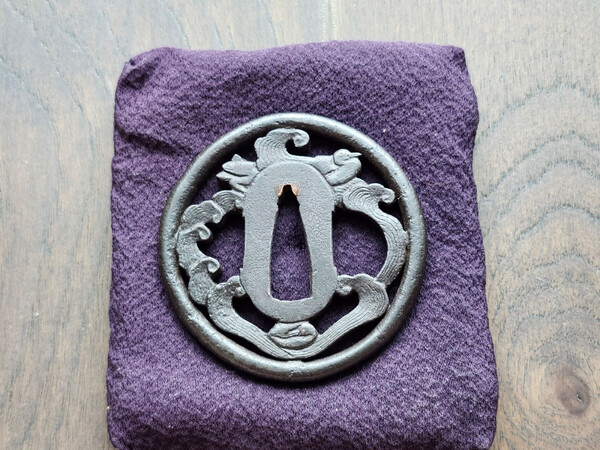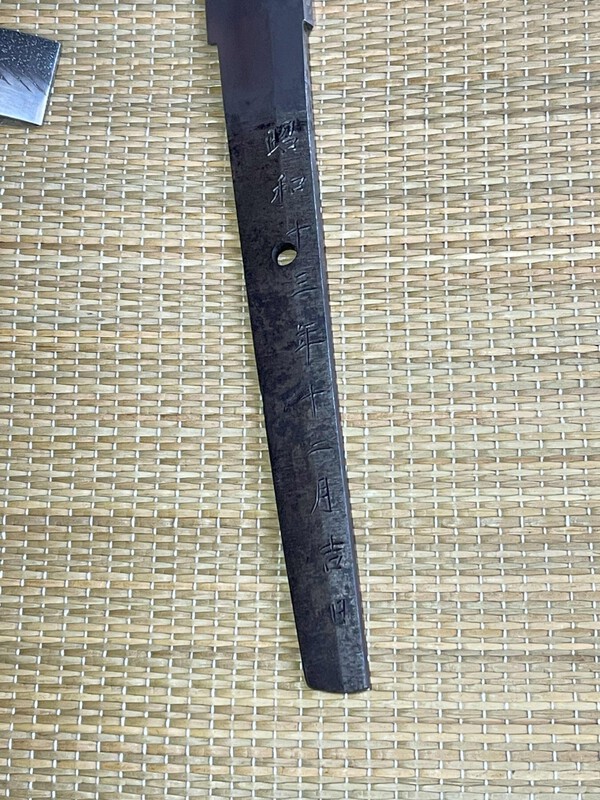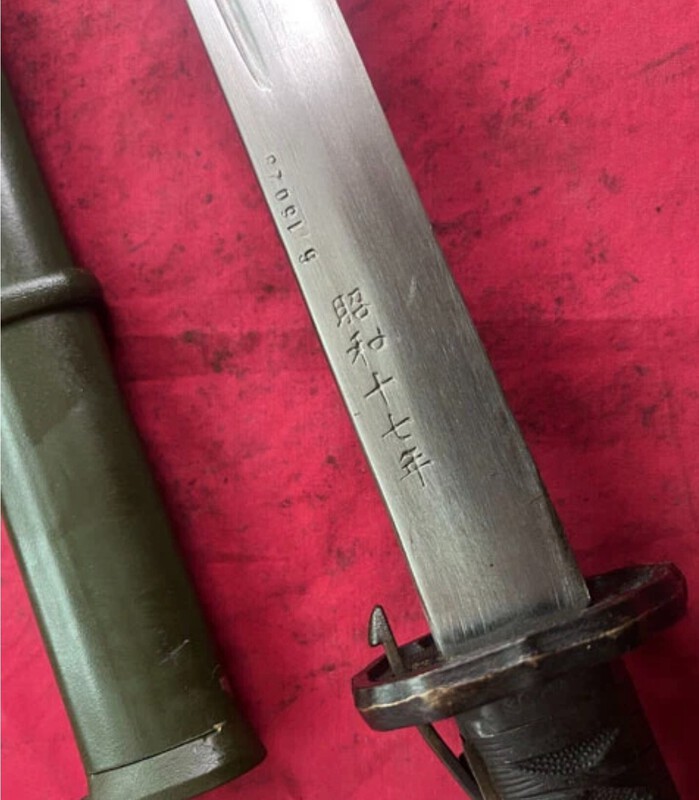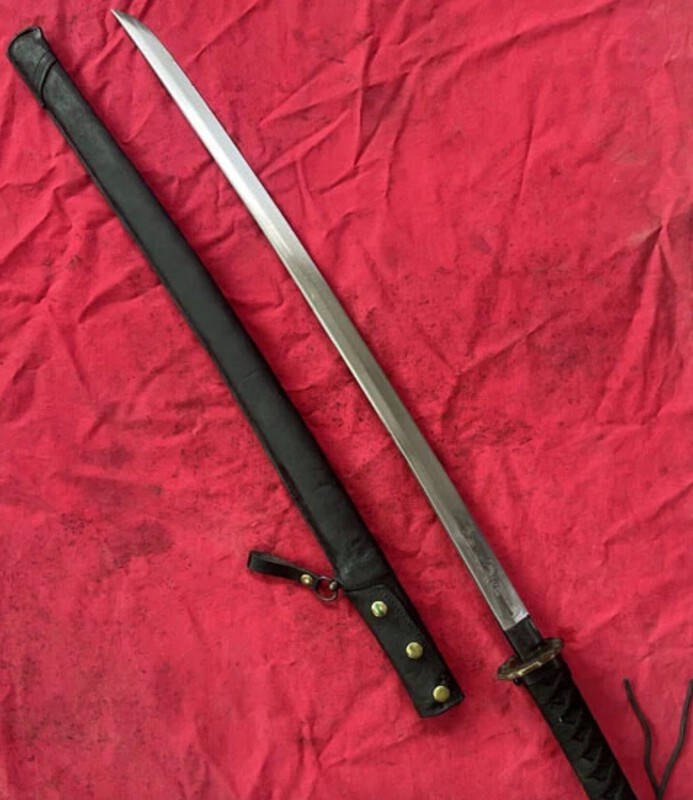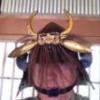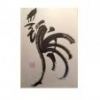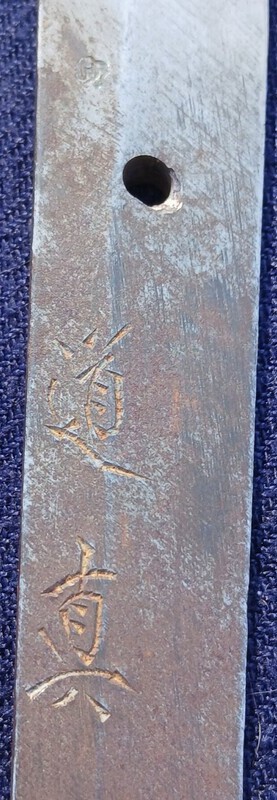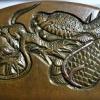Leaderboard
Popular Content
Showing content with the highest reputation on 07/02/2025 in all areas
-
4 points
-
Although Kobayashi Taigen (1938-) has brushed numerous versions of this solitary and simplest kanji character, in no other has he used the technique of "white space" to its fullest and most vibrant effect. In Zen, the concept of "one" (or rather, "not one") often refers to the negation of duality and the interconnectedness of all things, moving beyond the limitations of individualistic perception. It's not about literal oneness, but rather about dissolving the perceived separation between self and other, subject and object, and ultimately, between reality and illusion. Zen emphasizes being fully present in the moment, without judgment or conceptualization. This includes recognizing the interconnectedness of all things in the here and now. In this sense, "one" can also refer to the singularity of the present moment, where everything is simply as it is. Kobayashi was born 1938 in Shenyang, China and raised in a Buddhist monastery when he was six years old. In 1975 he became the successor of abbot Miyanishi Genshō at Ōbai-in, a sub-temple of Daitoku-ji, Kyōto. He is a prolific calligrapher, maker of tea bowels and bamboo tea scoops for traditional tea ceremony (chanoyu).2 points
-
2 points
-
Not wanting to further stray off topic here, but regarding dealers and Jacques' "mantra," it's not always possible to see a sword in hand. In places with no shows or local dealers, the internet is the only place for many to see and purchase swords. But Jacques is correct that a photo is often not enough. So, please be sure that when you buy online you have a minimum three-day inspection period to make sure that what you saw is what you got, and that it is what you wanted. If you don't you should be able to get a full refund, minus the postage to get the piece back. Most reputable dealers will do this. Yahoo and Ebay auction site holders as a general rule do not. So, as in all things, caveat emptor!2 points
-
Why are we generalizing about dealers in a question about one? Just disrespectful. Please start a new topic if you want to generalize.2 points
-
Ray, Awesome books. But does need to be noted that there are 2 Japanese volumes making up the set of these books....you are missing the other Japanese photo one. Then there is a rare additional volume with the English explanations, and that you do have there. So half the 2 book set, plus the additional volume. Worth checking out there what's available, as I daresay this will affect value and they are out there complete for considerably less. Sorry, but needed to be mentioned.2 points
-
A great opportunity for those who can accept the simple fact that old swords sometimes just have coarse grain, because they were made as weapons. Consider: Kotō (Muromachi) Ubu, signed and dated Long Healthy (look at the wide motohaba and thick kasane!) Reputable school NBTHK paper Also, the pictures aren’t that good (sorry Lex) and I am certain there is loads to be enjoyed in this sword. All in all, at this price it’s a bargain. Someone take advantage!2 points
-
You would be doing an injustice to the poor Shinto blades in general. Masahide, Suketaka, Tsunahide, Masashige initially simply followed the trend of demand in the Osaka Shinto style of Tsuda Sukehiro or Terukane. Blades with wide Yakiba and Nie-Deki high-temperature hardening are simply more brittle. Swordsmiths already knew this back then, they weren't stupid either. Take, for example, such Ara-Nie monsters from Mizuta Kunishige or Tameie. They made up for it with material. A mizuta that is not strong and broad across the average is not a good mizuta ;-). Incidentally, mizuta blades were extremely popular with the Ako-Ronin. Or take a look at Satsuma. Masayuki and Motohira were contemporaries of Masahide. Did they follow Masahide's nioi-deki depression? Satsuma, of all people, with her jigen-ryu, which is based on powerful blows? The result is powerful blades with pronounced hamaguri-niku. It's a tactic to promote a product by badmouthing others. That is marketing. In the end, Kiyomaro proved with similar tests and a good portion of bad boy image that (his) Nie-Deki Soshu-Utsushi can withstand more than some Nioi-Deki blades from Masahide students.2 points
-
Not common, but we have seen one or two, like that one. I posted a while back and @Lareon commented on.2 points
-
2 points
-
2 points
-
Dear NMB, I am offering this Nio Kiyoharu katana for sale with NBTHK papers. Katana Nio Kiyoharu, Dated August, 2nd Year of Tenshō (1574) Blade Length: 71.5 cm (approx. 2 shaku 3 sun 6 bu minus) Curvature (Sori): 1.8 cm Width at Base (Moto-haba): 3.20 cm Width at Tip (Saki-haba): 1.90 cm Thickness at Base (Moto-kasane): 0.75 cm Thickness at Tip (Saki-kasane): 0.48 cm Mekugi-ana (peg holes): 1 Description: Shinogi-zukuri, with a high shinogi and low iori-mune. It has a medium-length kissaki. The kitae is nicely formed ko-itame mixed with itame and some masame hada, with strong flowing patterns in places and a clearly visible jigane. The hamon (temper line) is suguha-chō, with small nie and some nice hataraki. The boshi has a slight notare style and is covered with nie. The nakago is ubu. It comes with a large copper habaki plated with gold. Has a shirasaya and a sword bag. SOLD Free shipping inside EU Shipping outside EU available for a small additional cost (€20–40) Shipped with UPS Express (or different courier), fully insured to full value Located in the Netherlands – pickup possible Any questions are always welcome! There will be a donation made to NMB if the blade is sold through NMB.1 point
-
Little SALE: Buy 2, take 10% off. Buy 3, take 15% off. Shipping and Customs per your Instructions. (1) Ko-kinko paulownia f/k: $375 (Good set. Better than photos.) (2) Umetada Duck tsuba: $250 (Confuscian Happiness theme.) (3) Kanayama Birds tsuba: $250 (Old illegible writing on back.) --If interested, PM me. -Curran [Chris]1 point
-
Excellent! Rare to see bonji on a gunto blade. Any estimate of a date range?1 point
-
Sure, Lex. The seller didn't take good pictures ,but here are a few where you can kinda make out the jigane.1 point
-
My mantra again, Never buy a sword even tokubetsu juyo without having had it in hands1 point
-
Bob, it may not be a "s**t storm" (SHITODOME) TSUBA, but a SHITOGI TACHI TSUBA? The SEPPA look like ordinary ones with the adapted bend.1 point
-
Well Kirill - I have to say that such a statement is a bit unfair Besides, you are also a seller as you said yourself and I assume that as a good seller you also emphasize positives and optimistic assumptions If a Ford dealer said - well, in truth, Honda has fewer breakdowns and our service hours are twice as expensive, but we have higher fuel consumption - he probably wouldn't be successful in selling If a seller doesn't include misleading information, but emphasizes sales arguments in a positive light, then he is just applying the right sales strategy1 point
-
1 point
-
1 point
-
1 point
-
1 point
-
Hi Rebecca, This is not Japanese. I would say this is a late 1800s/ early 1900s German hunting knife. The acorn motif is quite common to find on German hunting knives of the period. Are there any maker’s marks on the ricasso? Conway1 point
-
1 point
-
An interesting point in Masahide revival of sword tradition was that shinto sword were not trustable anymore in fight. He broke à lot of them to make this point clear ... and that was the starting point of shinshinto era.1 point
-
Good eye @Rawa https://www.ebay.com/sch/i.html?item=336037970198&rt=nc&_trksid=p4429486.m3561.l161211&_ssn=wangjuan58 Interestingly, the 95 fakes seem to have the same miss-stamped serial number. It seems only the Saya color that differentiates them. His fake swords are so alike, it's hard to tell that they are even different listings... Are they? Or is it the lighting? I cannot say for certain. -Sam1 point
-
Careful, before you know it you'll want an example of all the different patterns (that's what has happened to me) For a deep dive into some of the nuance of these swords, Nick Komiya's contributions to the warrelics threads below taught me a lot; along with some very generous forum members here on NMB: https://www.warrelics.eu/forum/Japanese-militaria/short-development-history-type-95-gunto-676112/ This is a good one too: https://www.warrelics.eu/forum/Japanese-militaria/ija-type-95-nco-sword-info-228172/1 point
-
It’s as you say, Fabien, and some of us have spent years tracking down the answer to this. The quick answer must be yes, they were Portuguese snapping matchlocks with the sprung-and-released serpentine falling forwards, away from the shooter. All subsequent Japanese matchlocks, large and small, follow this remit, with a myriad of detail, geographical and gun school variations. Sawada Taira in Nihon no Furujū calls this age, from 1542-1600, (roughly the first 50 years), the Dark Age, because so little has survived, and even less is dated. There are a few photos of guns or parts of guns in his book that have been passed down with attached stories. The museum in Tanegashima has two guns in their large collection which they confidently call ‘original’ but this story must be taken with a pinch of salt. Ian Bottomley says there is at least one quite original gun in the Tokugawa Art Museum in Nagoya, which they do not show people. Something I discovered, or realized, as they were staring everyone in the face, is that early dated Goto Kinko work showing designs of guns and accessories, must actually be among the very first illustrations of imported (or careful copies of) Western guns, before the luxury of subsequent Japanese modifications. Find examples of forward snapping Portuguese matchlocks from Goa (and Africa) and you’ll be seeing roughly what reached Japan, before the Japanese sensibility started refining the concept. The oldest Japanese matchlock guns I have handled tend to be rather spartan, functional but heavy in relation to the bore. (This is all covered in the book Jan and I have written. Hoping it can more forward…)1 point
-
@Bruce Pennington @Joseph P. there looks to be an error in the Sesko list with two smiths (from original Seki list): Made in November 1944. I think you have the name right. Sesko lists 2 by that name working during the war: "MICHIZANE (道真), Shōwa (昭和, 1926-1989), Gifu – “Michizane” (道真), real name Kosaka Takao (小坂隆男), born February 20th 1921, he worked as guntō smith and died December 17th 1964 MICHIZANE (道真), Shōwa (昭和, 1926-1989), Gifu – “Michizane” (道真), family name Nagao (長尾), he worked as guntō smith, ryōkō no retsu (Akihide) There is only one MICHIZANE and his real name was NAGAO TAKAO 道真 長尾 隆男 born Taisho 10 (1921) February 20, registered as a Seki smith on Showa 16 (1941) August 7. He was a student of Asano Kanezane. In 1942 Banzuke (Akihide) listed as Nagao Michizane. Looks to be also read as MICHISANE, but more likely "zane" is correct as a student of "Kanezane". These NOSHU examples with Sho stamp look to be katana-mei and well made Showato. Your blade is later war Nov 1944 and as noted through Nagoya Arsenal with small Seki stamp and Gifu stamp. Also is signed tachi-mei and in rinji seishiki koshirae. "Zane" is cut slightly different.1 point
-
Well first impression is why is the design upside down on the tsuba but it does remind me of this "high quality tsuba" https://www.ebay.ph/itm/226167463543 which at least is the right way up - even though there is nothing "high quality" about a cast copy - https://www.jauce.com/auction/h1182949396 - yes, sorry but I could not find an exact match with the gourd in the Haori design - so stuck with two horses https://www.ebay.com.au/itm/235953631259 not really a tsuba but a commemoration of a military disaster! Japanese Police, 1976 Operation Kikusui Commemorative Medal, Hyogo Prefectural Police Chief and Superintendent, Kikusui Crest & Sword Tsuba Design.Operation Kikusui - Between April and June 1945, thousands of promising young men were sacrificed in a suicide mission commanded by incompetent military officials.The chrysanthemum flower on the medal is a tribute to the deceased.1 point
-
It would be: Showa - 昭和 10 - 十 9 - 九 Year - 年 10 - 十 1 - 一 Month - 月 All together, Showa 19th year, 11th month (November 1944) Showa was an era of Japanese history corresponding to Emperor Hirohito (Showa) from 1926 (Showa 1) to 1989 (Showa 64) when he died.1 point
-
Interesting site, shame i see "price on request", a real off put, sadly.1 point
-
Don't forget the RJT and private-made gendaito of the Showa era 1926-1945. These are the last in the 1000 year history of traditionally made nihonto to be made specifically for use on the battlefield. That's why I collect them...they are the most relevant to my parents generation and to my own. Regards...1 point
-
Clear picture showing sugata would help a lot, but otherwise - I see nothing obviously wrong with the attribution. Weak hamon, ayasuhi hada - not too many other options are here. Nakago is ok. Not burnishing above shinogi is a choice, and often a fine one. Theoretically it is possible that with detailed photographs the signature comes out as very weird and its Muromachi (Tembun) Gassan with a gimei Gassan signature. Such things do happen - mumei from birth and then someone quickly "corrects" the omission and we have a genuine blade with a horrible writing. Another possibility it has a hagire, running off hamon or other issue the seller does not want to show. But again it is most likely Muromachi Gassan.1 point
-
Hi! I have now read the book. It was an utter pleasure. I had the idea that, due to my perception of a narrow subject, it might be very technical and attract mostly hard core tepponistas. This is not the case. The book gives an exellent historical recollection of the history of the Uesugi clan, their developement from the Momoyama all the way to the end of the Edo period. It also gives insights in the hardship for the peasants and samurai alike. The book is just as much a history book in general as a specific tale of the development and use of matchlocks, not only in Yonezawa, but all over Japan. It offers new insights and topples old preconceptions and also opens up for new theories regarding the origin of certain matchlocks. This is a book to read, not only for the few collectors of these lovely guns but for everyone interested in Japanese history. I strongly recommend to read it. Anthony de Vos1 point
-
I was about to really let rip…..but decided a glass of wine was a better idea. Talk about a government in total utter chaos. Glug, cheers!0 points
-
Not currently in Japan, and no papers I suppose? If it is koto and looking like this, it should easily be able to get papers, so why would the seller not do that? The third picture looks possibly acid treated to enhance the hada. As a starting collector, I would be very cautious.-1 points
This leaderboard is set to Johannesburg/GMT+02:00


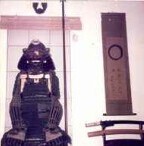



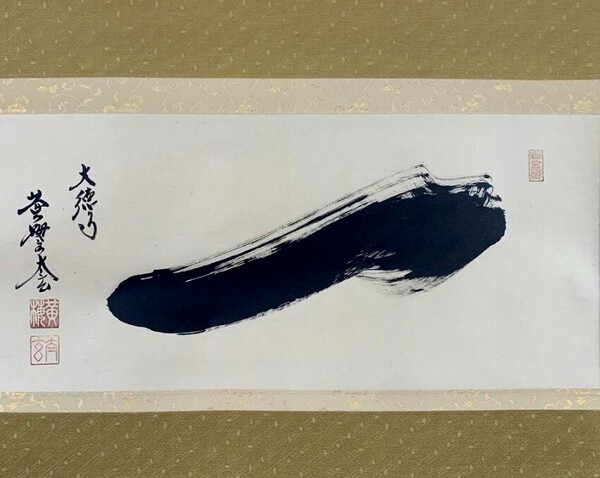



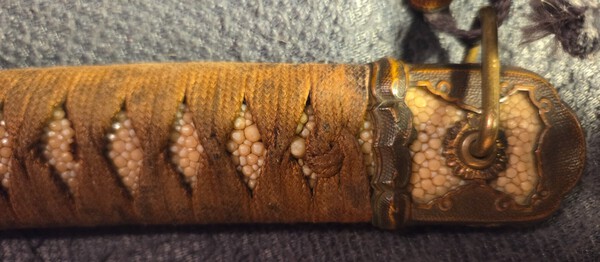
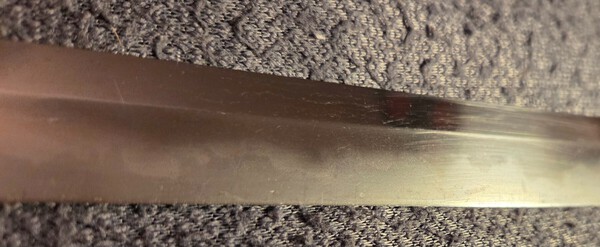

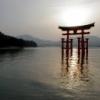
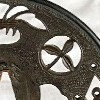







.thumb.jpeg.90938891b2288b96404c71e5d546f878.jpeg)
.thumb.jpeg.b678d76dcead34247c5045e9e1fcc36f.jpeg)
.thumb.jpeg.7fabdd4eba8ea35ee5703d0d1ae3d019.jpeg)
